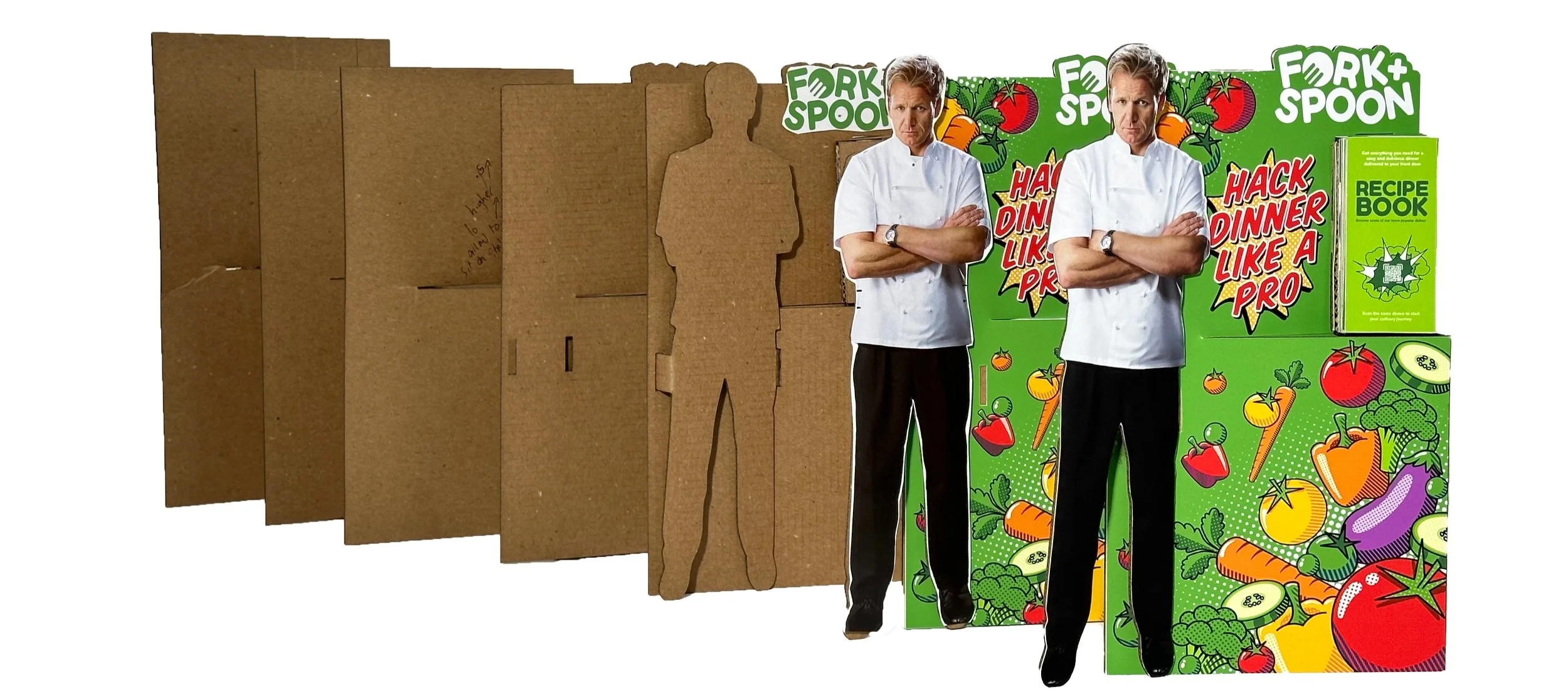
an IDENTITY SYSTEM
Establish a sub-brand for an existing company with a BRAND IDENTITY SYSTEM that reflects the parent brand's values while establishing its own unique identity and market position.
“Our mission is to nourish people's lives by offering a wide variety of convenient, delicious, and affordable food choices that can help everyone enjoy a balanced, healthful diet.”
BRAND COLORS
CHOSEN PARENT BRAND
Campbells’ CORE VALUES
CARE
We care about each other, our consumers and customers, the communities we serve, and the planet we share.
CHARACTER
We act with integrity and transparency, execute with excellence, and are accountable for our actions.
COLLABORATION
We believe inclusive and diverse teams build trust and lead to better results.
COMPETETIVENESS
We are growth-minded, take bold actions, move fast, and play to win.
CREATIVITY
We innovate and find solutions to continuously improve.
understanding CAMPBELLS RIGHT NOW
The profitability of Campbells' organic brands is on an upward trend. A faster growing space than canned soup, Campbells is focusing on these brands, acquiring Pacific Foods in late 2017.
SUCCESS IN ORGANICS
In recent years, Campbells Soup has made a strong push in its marketing toward younger audiences with professional sports ads and video game advertising
ENGAGING MILLENIALS
Campbells launched their Well Yes soup brand in 2017, saying yes to more vegetables and whole grains. These single serving soups include a variety of on-trend nutritious ingredients like bone broth, cauliflower, and chickpea.
NEW PRODUCTS
WORKING
-
Campbells had been producing and distributing food products since 1869 and was valued at approximately 14 billion dollars as of May, 2024. This conglomerate has an expansive and diverse food supplier network.
-
54% of Campbells meals and beverages division’s recipes for family meals cost less than $3 per serving. In addition to this, many of Campbell’s soup options often retail for no more than $5 a can as of 2024.
-
95.8% of all American households have at least one Campbell product according to a 2022 Campbells corporate responsibility report.
-
Preparing a can of soup takes approximately 5-10 minutes.
NOT WORKING
-
A substantial portion of Campbells consumer base is 45-65 years old, with its highest rate if loyalty being from those in their mid to late 50s. This is further exemplified by Campbells recent a d concerted push in marketing to younger consumers.
-
“Canned soup is the epitome of a processed food product.” - CNN Business
-
With temperatures rising globally, soup seems to be on the path for a decline.
identifying the TARGET CUSTOMER
DEMOGRAPHIC
25-40 year olds with disposable income.
VALUES + AMBITIONS
Busy professionals or parents seeking a convenient and balanced meal solution.
BEHAVIOR
Orders takeout or prepares processed food despite valuing the home cooked meal.
brand IDENTITY
Restoring the occasion of the meal and the importance of gathering with loved ones
Making a delicious home cooked dish more accessible
Empowering customers to enjoy more time and flexibility be relieving much of the stress of cooking
logo IDEATION


how are the kits DIFFERENT out of the box?
Investigating the customer experience and how it can be elevated through THOUGHTFUL PACKAGING informed by the established desires of the brand’s target customer.
the PACKAGING EXPERIENCE
determining PAINPOINTS
As is the case for many popular meal kit services, meals are separated within each package, often within brown paper bags. Placed in proximity to cooling packs and cold items, condensation during the time of shipping can not only compromise the paper bags, but also the items within.
WET CONTENTS
Many services place labels on each individual meal pack; however, text size is often small and can be hard to read when glancing into a refrigerator.
SMALL LABELS
Although there is no commercially viable solution to plastics in the case of some food packaging, many meal kits feature an excess of single use plastic packaging. This is evident when initially unpacking the box, and when cooking each meal.
PLASTIC WASTE
concept exploration: SKETCHING
sequence of USE



POINT OF PURCHASE DISPLAY:
creating awareness and engagement
EASE OF DISCOVERY
A display in-store can present itself as an introduction to the meal kit concept.
APPROACHABILITY
Seeing a display in a familiar setting could remove barriers for those who haven’t tried meal kits.
CREDIBILITY
Partnering with established grocery chains can lend credibility by assosiation.
concept exploration: SKETCHING
storyboarding CUSTOMER INTERACTION
functional CONSIDERATIONS
GLUELESS design for construction convenience.
REAR STAND for further stability.
EXCHANGEABLE meal cards.
CELEBRITY endorsement for further credibility.
RECIPE BOOK in order to showcase seasonal meals.
scale model REFINEMENT
PARTS and ASSEMBLY

TRADE SHOW EXHIBIT










































